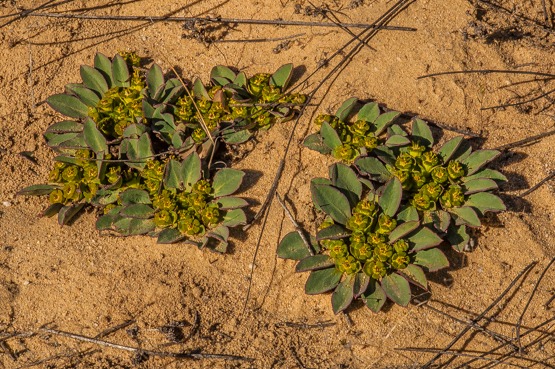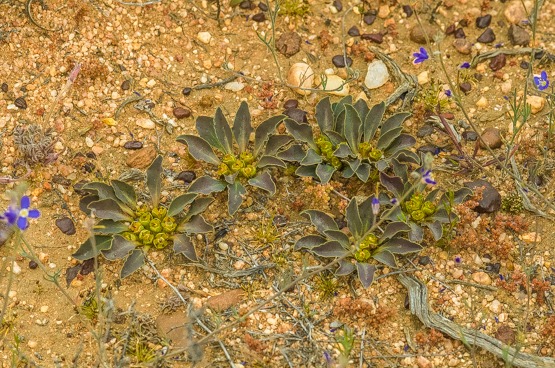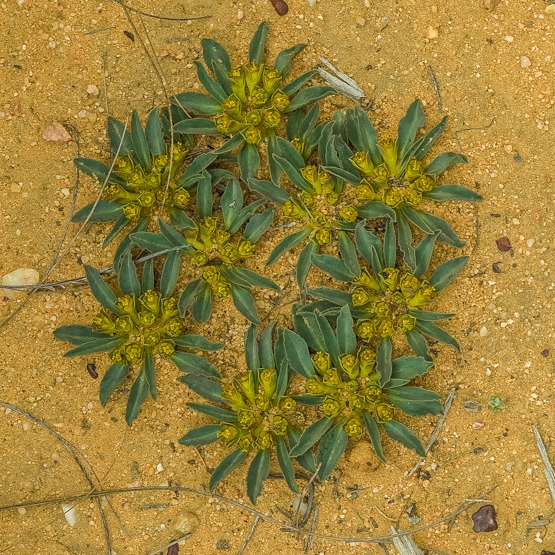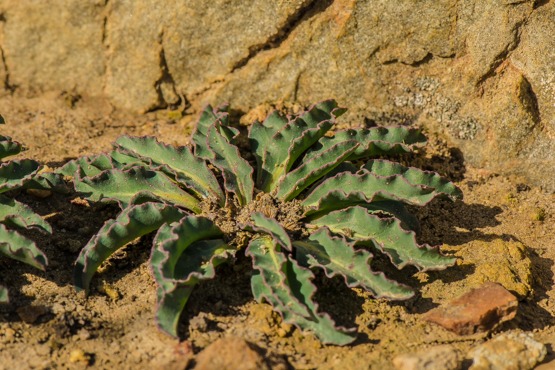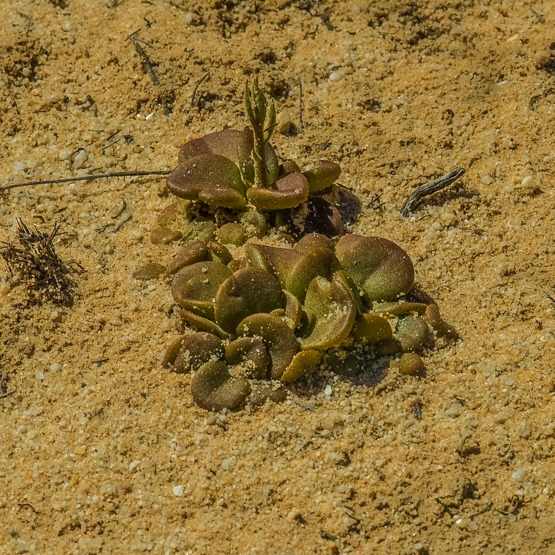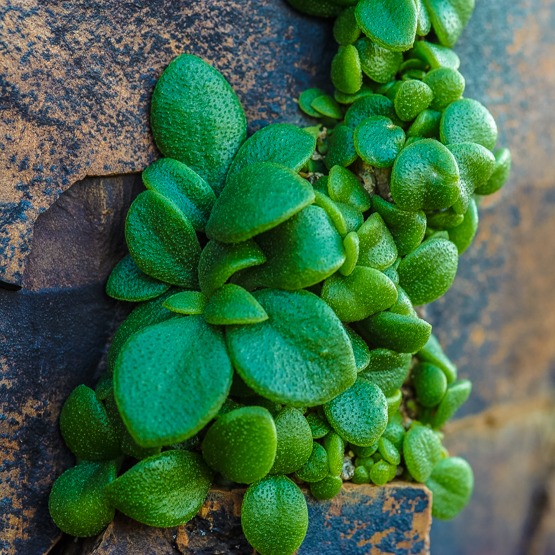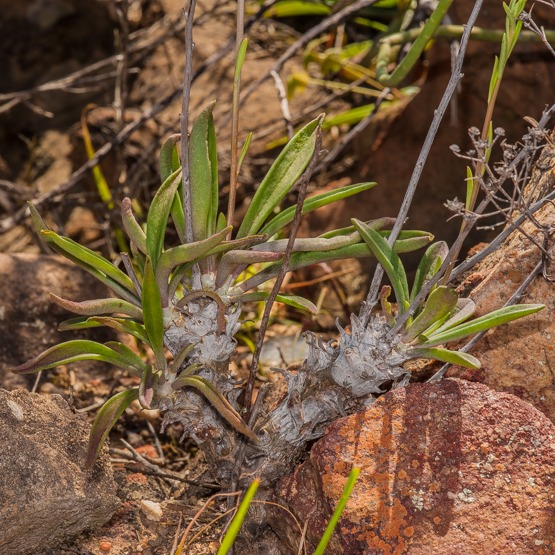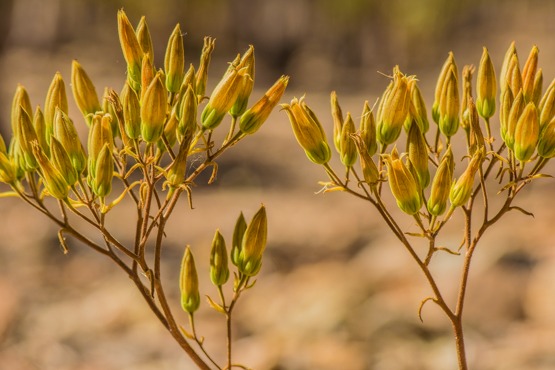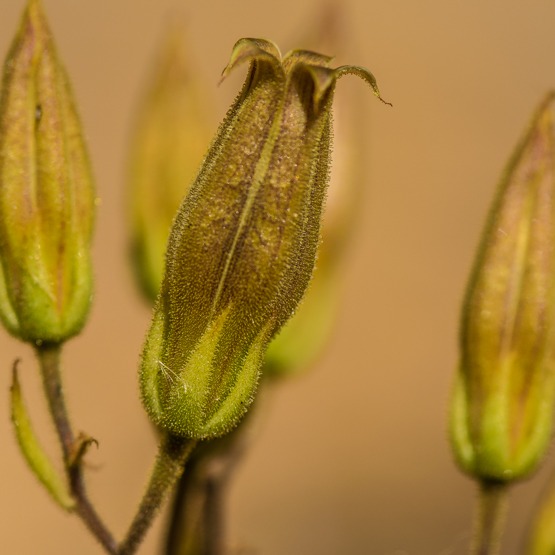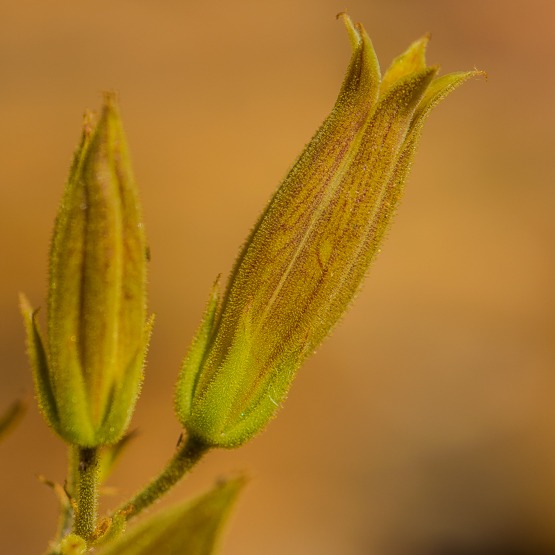Common names: Melkbol, Wilderamenas
This member of a small group of geophytic Euphorbias has underground tubers up to 2.5 cm thick which can form large groups. The plants are stemless and either male or female.
Its leaves have a stalk up to 5 cm long and may be oblong to almost lanceolate, linear or elliptic,1 to 5 cm long and 0.5 to 2.5 cm wide, often minutely hairy and grey-green, usually with wavy margins. They are only present in the growing period.
The flowering season is mainly June-September.
The species occurs on sandy and gravelly flats and slopes from near Springbok to the Cape Peninsula and the western part of the Little Karoo.
